Cricket World Cup Betting Offers & Free Bets, South Africa, Namibia and Zimbabwe 2027
 The 14th edition of the Cricket World Cup will be held between three hosts; South Africa, Namibia and Zimbabwe. This is the second time South Africa and Zimbabwe have co-hosted (after 2003) and the first time for Namibia.
The 14th edition of the Cricket World Cup will be held between three hosts; South Africa, Namibia and Zimbabwe. This is the second time South Africa and Zimbabwe have co-hosted (after 2003) and the first time for Namibia.
The 2027 tournament is made up 14 teams who will first play in a two groups of 7 each in a round-robin format consisting of 54 individual matches between October and November. This is followed by a Super Six stage that the top three in each group qualify for. The top four of those teams will contest the semi-final and final stage. The final will be held on Sunday 21st November.
Cricket is not a sport known for its betting offers but for bigger events like the ICC World Cup there are some very good value offers for both new and existing customers. If you plan to bet on the World Cup, either ante-post or in play during the competition, then by taking advantage of some of the free bets, insurance and bonus deals on this page you can often enhance your winnings.
England will be among the favourite having won their first World Cup in 2019 on home soil in spectacular style winning through a super over, however you can not discount Australia, who have won it no less than 6 times, and, of course, double champions India. Further down you can find outright odds (updated throughout) along information about the format, schedule, statistics and history of the cricket World Cup.
Cricket World Cup Betting Offers for 2027
This event has not started yet, please check back nearer the time. For other offers see our main loyalty page.
World Cup Format
Qualification
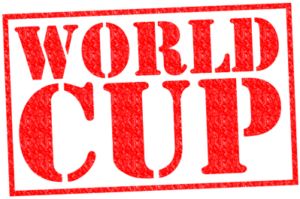 The 2027 ICC Cricket World Cup will see 14 teams compete, which is an increase from the 10 teams in 2019 and 2013 and back in line with the 14 teams that competed in 2011 and 2015.
The 2027 ICC Cricket World Cup will see 14 teams compete, which is an increase from the 10 teams in 2019 and 2013 and back in line with the 14 teams that competed in 2011 and 2015.
The hosts South Africa and Zimbabwe qualify automatically but Namibia are not guaranteed a spot despite being a co-host as they are not a full ICC member, therefore, they will have to go through the qualification route. Another 8 automatic qualification sports are given to the top 8 teams in the ICC One Day International rankings as of March 2027.
The remaining four places are decided through a world cup qualifier. This will include the teams ranked 9 and 10 in the ICC ODI rankings, four teams from the Cricket World Cup League 2 and the top two teams in each of the two groups of the World Cup Challenge League.
As usual the ICC seem to make qualification for these four final spots as convoluted as possible. The ten teams in the qualifier tournament are split into two groups and play each other in a round-robin format with two points for a win and one point for no result or tie.
After four matches are played the top 3 teams in each group advance to the Super Sixes stage. Teams carry forward results against each other within their groups (i.e. you enter the super sixes league with 2 games already on the board). You then play the 3 teams from the other group in a round-robin format. At the end the top two teams qualify for the World Cup. For the 2023 World Cup this was Sri Lanka and the Netherlands.
Tournament
 The ICC World Cup consists of a group stage followed but two knockout stages. The fourteen finalists compete in two groups of seven teams, again in a round-robin format, each team playing each other once with two points for a win, none for a loss and one for no result or tie.
The ICC World Cup consists of a group stage followed but two knockout stages. The fourteen finalists compete in two groups of seven teams, again in a round-robin format, each team playing each other once with two points for a win, none for a loss and one for no result or tie.
The format has changed much over the years, rarely remaining the same for more than two world cups in a row.
Following the 42 round-robin matches (21 per group) the top three teams in each group progress to the Super Six stage. This sees the teams from one group play against teams from the other group in a round-robin format, however, results for teams that played each other in the same group are carried forward under a modified PCF (points carry forward) system.
Following the 9 Super Six matches the top 4 teams progress to the semi-finals, with first playing fourth and second playing third. This is followed by the final. That makes 54 matches in total, an increase of 6 from the 48 in 2019 and 2023.
This is a similar format to what was used in the 2003 World Cup.
2023 World Cup Match Schedule
| Dates | Match | Venue |
|---|---|---|
| 5th October | England v New Zealand | Narendra Modi Stadium |
| 6th October | Pakistan v Netherlands | Rajiv Gandhi International Stadium |
| 7th October | Afghanistan v Bangladesh | HPCA Stadium |
| 7th October | South Africa v Sri Lanka | Arun Jaitley Stadium |
| 8th October | Australia v India | M.A. Chidambaram Stadium |
| 9th October | New Zealand v Netherlands | Rajiv Gandhi International Stadium |
| 10th October | Bangladesh v England | HPCA Stadium |
| 11th October | Afghanistan v India | Arun Jaitley Stadium |
| 12th October | Pakistan v Sri Lanka | Rajiv Gandhi International Stadium |
| 13th October | Australia v South Africa | BRSABV Ekana Cricket Stadium |
| 14th October | Afghanistan v England | Arun Jaitley Stadium |
| 14th October | Bangladesh v New Zealand | M.A. Chidambaram Stadium |
| 15th October | India v Pakistan | Narendra Modi Stadium |
| 16th October | Australia v Sri Lanka | BRSABV Ekana Cricket Stadium |
| 17th October | South Africa v Netherlands | HPCA Stadium |
| 18th October | Afghanistan v New Zealand | M.A. Chidambaram Stadium |
| 19th October | Bangladesh v India | Maharashtra Cricket Association Stadium |
| 20th October | Australia v Pakistan | M. Chinnaswamy Stadium |
| 21st October | England v South Africa | Wankhede Stadium |
| 21st October | Netherlands v Sri Lanka | BRSABV Ekana Cricket Stadium |
| 22nd October | India v New Zealand | HPCA Stadium |
| 23rd October | Afghanistan v Pakistan | M.A. Chidambaram Stadium |
| 24th October | Bangladesh v South Africa | Wankhede Stadium |
| 25th October | Australia v Netherlands | Arun Jaitley Stadium |
| 26th October | England v Sri Lanka | M. Chinnaswamy Stadium |
| 27th October | Pakistan v South Africa | M.A. Chidambaram Stadium |
| 28th October | Bangladesh v Netherlands | Eden Gardens |
| 28th October | Australia v New Zealand | HPCA Stadium |
| 29th October | England v India | BRSABV Ekana Cricket Stadium |
| 30th October | Afghanistan v Sri Lanka | Maharashtra Cricket Association Stadium |
| 31st October | Bangladesh v Pakistan | Eden Gardens |
| 1st November | New Zealand v South Africa | Maharashtra Cricket Association Stadium |
| 2nd November | India v Sri Lanka | Wankhede Stadium |
| 3rd November | Afghanistan v Netherlands | BRSABV Ekana Cricket Stadium |
| 4th November | Australia v England | Narendra Modi Stadium |
| 4th November | New Zealand v Pakistan | M. Chinnaswamy Stadium |
| 5th November | India v South Africa | Eden Gardens |
| 6th November | Bangladesh v Sri Lanka | Arun Jaitley Stadium |
| 7th November | Australia v Afghanistan | Wankhede Stadium |
| 8th November | England v Netherlands | Maharashtra Cricket Association Stadium |
| 9th November | New Zealand v Sri Lanka | M. Chinnaswamy Stadium |
| 10th November | Afghanistan v South Africa | Narendra Modi Stadium |
| 11th November | India v Netherlands | M. Chinnaswamy Stadium |
| 12th November | England v Pakistan | Eden Gardens |
| 12th November | Australia v Bangladesh | Maharashtra Cricket Association Stadium |
| 15th November | India v New Zealand (SF1) | Wankhede Stadium |
| 16th November | South Africa v Australia (SF2) | Eden Gardens |
| 19th November | India v Australia (Final) | Narendra Modi Stadium |
World Cup Venues
| Venue | Location | Home Team | Capacity | Opened | WC Matches |
|---|---|---|---|---|---|
| Narendra Modi Stadium | Ahmedabad | Gujarat | 132,000 | 1983 | 5 (inc Final) |
| Eden Gardens | Kolkata | Bengal | 66,000 | 1864 | 5 (inc SF) |
| Rajiv Gandhi International Cricket Stadium | Hyderabad | Hyderabad | 55,000 | 2003 | 3 |
| M. A. Chidambaram Stadiumn | Chennai | Chennai | 50,000 | 1916 | 5 |
| BRSABV Ekana Cricket Stadium | Lucknow | Uttar Pradesh | 50,000 | 2017 | 5 |
| Arun Jaitley Stadium | Delhi | Delhi | 41,842 | 1883 | 5 |
| M. Chinnaswamy Stadium | Bengaluru | Karnataka | 40,000 | 1969 | 5 |
| Maharashtra Cricket Association Stadium | Pune | Maharashtra | 37,406 | 2012 | 5 |
| Wankhede Stadium | Mumbai | Mumbai | 32,000 | 1975 | 5 (inc SF) |
| HPCA Stadium | Dharamshala | Himachal Pradesh | 23,000 | 2003 | 5 |
Statistics & Facts
Previous Winners
| Year | Winner | Runner-Up | Host |
|---|---|---|---|
| 2031 | ? | ? | India / Bangladesh |
| 2027 | ? | ? | South Africa / Zimbabwe / Namibia |
| 2023 | Australia | India | India |
| 2019 | England | New Zealand | England / Wales |
| 2015 | Australia | New Zealand | Australia / New Zealand |
| 2011 | India | Sri Lanka | India / Sri Lanka / Bangladesh |
| 2007 | Australia | Sri Lanka | West Indies |
| 2003 | Australia | India | South Africa |
| 1999 | Australia | Pakistan | England / Wales |
| 1996 | Sri Lanka | Australia | India / Pakistan / Sri Lanka |
| 1992 | Pakistan | England | Australia / New Zealand |
| 1987 | Australia | England | India / Pakistan |
| 1983 | India | West Indies | England |
| 1979 | West Indies | England | England |
| 1975 | West Indies | Australia | England |
Most Successful Teams
| Team | Champions | Runner-Up | Matches | Won/Tie-NR/Lost | Win Rate |
|---|---|---|---|---|---|
| Australia | 6 | 2 | 105 | 78 / 2 / 25 | 75% |
| India | 2 | 2 | 95 | 63/ 2 / 30 | 68% |
| West Indies | 2 | 1 | 80 | 43 / 2 / 35 | 55% |
| Pakistan | 1 | 1 | 88 | 49 / 2 / 37 | 57% |
| Sri Lanka | 1 | 2 | 89 | 40 / 3 / 46 | 47% |
| England | 1 | 3 | 92 | 51 / 3 / 38 | 57% |
| New Zealand | 0 | 1 | 99 | 59 / 2 / 38 | 61% |
The table above displays teams that have competed in all 13 World Cup tournaments to date or who have won the World Cup at least once
Other Statistics and Trivia
| Statistic | Value |
|---|---|
| Most Runs | Sachin Tendulkar – 2278 (India 1992-2011) |
| Most Runs Single World Cup | Virat Kohli – 765 (2023) |
| Most Hundreds | Rohit Sharma – 7 (2015-2023) |
| Most Hundreds Single World Cup | Rohit Sharma – 5 (India, 2019) |
| Highest Batting Average | Lance Klusener – 124.00 (1999-2003) |
| Highest Batting Score | Martin Guptill – 237 not out (Australia vs West Indies 2015) |
| Fastest 100 | Glenn Maxwell – 40 balls (Australia vs Netherlands 2023) |
| Most Sixes | Rohit Sharma – 54 (2015-2023, 28 matches) |
| Most Wickets | Glen McGrath – 71 (Australia 1996-2007) |
| Most Wickets Single World Cup | Mitchel Starc – 27 (2019) |
| Best Bowling Average | Andy Bichel – 12.31 (2003) |
| Best Bowling Strike Rate | Mohammed Shami – 15.8 (India 2015-2023) |
| Best Bowling Figures | Glen McGrath – 7 / 15 (2003 vs Namibia) |
| Most Catches (Fielder) | Ricky Ponting – 28 (Australia 1996-2011) |
| Most Dismissals (Wicket-Keeper) | Kumar Sangakkara – 54 (2003-15) |
| Most Consecutive Team Wins | Australia – 27 (1999-2011) |
| Most Consecutive World Cup Wins | Australia – 3 (1999-2007) |
| Highest Score | 428-5 (South Africa v Sri Lanka 2023) |
| Lowest Score | 36 all out (Canada v Sri Lanka, 2003) |
| Most Used Venue | Old Trafford (17 matches 1975-2019) |
| Most World Cups | 6 – Sachin Tendulkar & Javed Miandad |
| Most Appearances | 46 – Ricky Ponting |
| Youngest Player | Nitish Kuman – 16y 283d (Canada, 2011) |
| Oldest Player | Nolan Clarke – 47y 257d (Netherlands, 1996) |
| Most Wins | 78 – Australia (1975-2023) |
| Most Loses | 46 – Sri Lanka (1975-2023) |
Data current up to the 2023 World Cup
History Of The ICC Cricket World Cup
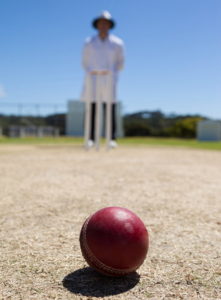 When you consider cricket as a sport you often think it has been around for many centuries. In reality professional cricket is only really as old as other sports such as football, with the first international test match taking place in 1875 between Australia and England. The teams met regularly to play The Ashes and in 1889 South Africa joined the test team party leading to further tours and even a triangular tournament in 1912. Other teams achieved test status over the ensuing decades but the game largely remained a bilateral arrangement with 3, 4 or 5 day tests matches between just two teams at a time.
When you consider cricket as a sport you often think it has been around for many centuries. In reality professional cricket is only really as old as other sports such as football, with the first international test match taking place in 1875 between Australia and England. The teams met regularly to play The Ashes and in 1889 South Africa joined the test team party leading to further tours and even a triangular tournament in 1912. Other teams achieved test status over the ensuing decades but the game largely remained a bilateral arrangement with 3, 4 or 5 day tests matches between just two teams at a time.
The old game of empire took on a new role after the second world war as many of Britain’s old colonies became independent and the sport of cricket became one of the most cohesive elements within the new Commonwealth of Nations. The sport had become a national game of many countries including Australia, India, Pakistan and the West Indies.
Despite a reinvigorated rivalry however test cricket was becoming increasing out of step with the faster modern world. In the 1960’s English county teams began to play a shorter form of the game allowing knock out tournaments to take place between several teams. This led to several one day competitions in the 1960’s and lead to a Sunday league being set up in 1969.
In 1971 the first one day international cricket match was played between England and Australia. The 40 over game (with 8 balls an over) came about by accident on the fifth day of a rained-off test match, the teams decided to play a short form game to compensate the fans for a lack of test action, and also to fill the time.
First Cricket World Cup
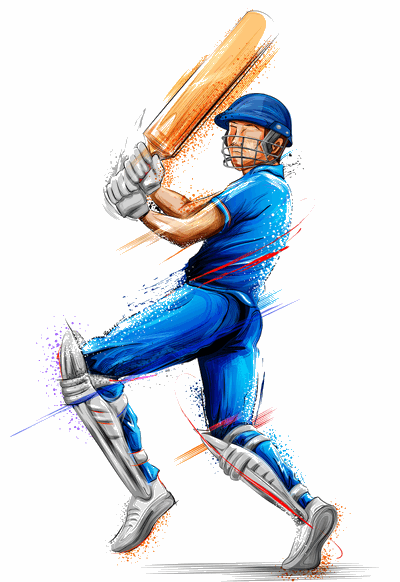 The new short form game was an immediate success with fans and by 1975 an inaugural World Cup was organised, known as the Prudential World Cup (due to sponsorship). Held in England in June eight teams took part playing 60 over games (6 balls an over), they still played in whites using a red ball. Back then the format was two groups of 4 teams with the top two from each group progressing to a semi-final and final stage. West Indies won the first World Cup beating Australia by 17 runs at Lord’s.
The new short form game was an immediate success with fans and by 1975 an inaugural World Cup was organised, known as the Prudential World Cup (due to sponsorship). Held in England in June eight teams took part playing 60 over games (6 balls an over), they still played in whites using a red ball. Back then the format was two groups of 4 teams with the top two from each group progressing to a semi-final and final stage. West Indies won the first World Cup beating Australia by 17 runs at Lord’s.
The 1979 World Cup followed the same format however by this time the ICC Trophy has been introduced as a means to select countries for the World Cup that were not test playing nations. Canada and Sri Lanka became the first teams to qualify this way. The West Indies again won, this time beating England by 92 runs at Lord’s.
The late 70’s was also the time the World Series of Cricket competition was established. This set the benchmark for many of the differences we now see in ODI cricket, such as coloured kits, floodlit matches, the white ball, dark screens, more camera angles for TV, on pitch microphones and graphics. This helped set aside the shorter form of the game as a more vibrant, modern and fast paced version of cricket, which was later taken a notch further when Twenty 20 cricket was introduced.
For the 1983 World Cup, again played in England, a fielding circle was brought in at 30 yards from the stumps with a new rule stating 4 fielders must be inside the circle at all times. India, initially priced at 66/1, won the World Cup beating double champions West Indies by 43 balls in the final.
First Hosts Outside Of England
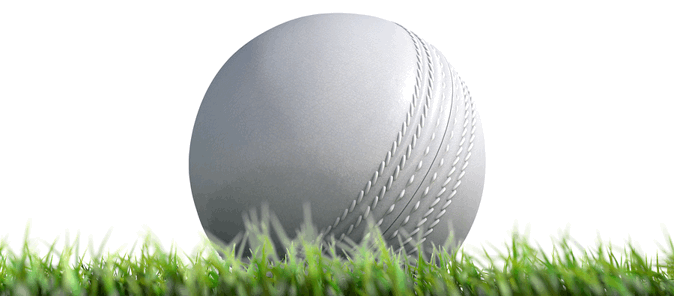
In 1987 the event was hosted outside of England for the first time with Pakistan and India sharing the responsibility. The number of overs was reduced from 60 to 50 to fit the shorter daylight hours in the summer nearer the equator, the format stuck however and has remained the same since. Australia won their first World Cup in a tense final beating England by just 7 runs.
By 1992 the international form of the game had caught up with the changes brought in over a decade ago during the World Series. This meant the ball changed to white, coloured clothing was introduced, day/night fixtures were added and extra fielding restrictions introduced. 9 teams entered this time and the format changed to a single group round-robin followed by a semi-final and final. Despite a poor start Pakistan came out victorious with a 22 run victory over the eternal also ran team, England.
In 1996 the tournament was again held in the sub-continent, split between Pakistan, India and Sri Lanka. 12 teams competed in two groups of 6 with the top four teams from each entering a quarter-final, semi-final and final knockout stage. Sri Lanka won their first world cup at their first attempt beating Australia comfortably by 7 wickets.
Australia Dominate
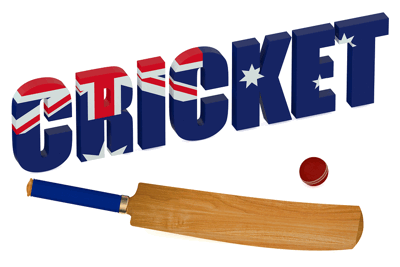 Australia dominated the next three World Cups, winning the 12 team 1999 event in England, the 14 team 2003 World Cup in South Africa (that saw the introduction of the Super Sixes) and the 16 team, 4 group with a super 8 stage, tournament in 2007 held in the West Indies. During this period Australia went 27 matches unbeaten.
Australia dominated the next three World Cups, winning the 12 team 1999 event in England, the 14 team 2003 World Cup in South Africa (that saw the introduction of the Super Sixes) and the 16 team, 4 group with a super 8 stage, tournament in 2007 held in the West Indies. During this period Australia went 27 matches unbeaten.
The super 6/8 stage was an additional group stage before the knockout phase. This was abandoned in 2011 in favour of going back two two groups followed by a knockout phase. 14 teams contested this time with 4 teams from each group entering a knockout at the quarter finals stage. India, hosts along with Sri Lanka and Banglasesh (after Pakistan were stripped of their right to host due to a terrorist attack on the Sri Lankan team in 2009), won the event for the second time beating co-hosts Sri Lanka by 6 wickets.
The 2015 Cricket World Cup was co-hosted by Australia and New Zealand with 14 teams and the same structure as 2011. The hosts met in the final but it was Australia who showed their class beating New Zealand by 7 wickets to claim their 5th title in 11 attempts.
Following making the semi-finals in 2019 Australia went into the 2023 distinctly under performing and that was evident when they lost both opening group matches against India and South Africa. The Aussies, however, went on to win the next seven games to set up a semi-final against South Africa, who they beat this time.
The final against India was only expected to go one way given the hosts support and form in the tournament. It wasn’t to be and Australia showed why they are six times winners by dominating the proceedings to win by six wickets. The Aussies have now won 6 out of 13 editions, three times more than India and the West Indies with two titles each.
England Win At Last In Dramatic Fashion
 The 2019 event saw a reduction to ten teams going back to one single group stage with all 10 teams playing a round-robin and the removal of the quarter final. Despite making three finals previously and hosting the event for the fifth time England were yet to win a Cricket World.
The 2019 event saw a reduction to ten teams going back to one single group stage with all 10 teams playing a round-robin and the removal of the quarter final. Despite making three finals previously and hosting the event for the fifth time England were yet to win a Cricket World.
England nearly failed to get out of the group stage with loses to Pakistan, Sri Lanka and Australia, but a great showing against India an New Zealand in the final two games saw them through to the semis. India lost unexpectedly to New Zealand and England beat Australia convincingly to set up a final that guaranteed a new first time world cup winner.
On a difficult wicket at Lords New Zealand posted 241-8, a total that seemed doable without too much fuss. New Zealand however kept England in check and in dramatic style the match ended in a tie, for the first time ever, with England 241 all out. This meant a Super Over had to be played.
England smashed 15 in the super over batting first and as if the contest couldn’t get any closer so did New Zealand, meaning England won by virtue of having hit more boundaries in the match. Without doubt the closest and most epic final ever.
Cricket World Cup Trophy
The World Cup trophy was actually different for from 1975 to 1996, with a bespoke version made each time the sponsor changed. In 1999 a permanent trophy was created featuring a golden globe in the shape of a cricket ball held aloft by three silver columns shaped in the form of stumps and bails. It weighs a significant 11kg and stands 0.6 meters tall.
The original trophy is kept by the ICC with an inscription of all previous winners. A replica trophy is given to each World Cup winner to keep.



